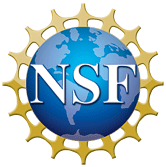Presenters-0567
From CSDMS
{{#default_form:Presenters}}
Abstract
Seismo-acoustic techniques can provide continuous, real-time observations with high temporal resolution and broad spatial coverage for process monitoring, detection and characterization in accessible environments. These capabilities are rapidly advancing with the growing use of distributed acoustic sensing (DAS) systems, which use fiber optic cables to provide continuous records of ground motion comparable to large-N arrays of single-component accelerometers or geophones. Compared to traditional seismic arrays, DAS arrays can be tens of kilometers in length with spatial resolution of meters and sampling frequencies from millihertz to kilohertz. In this clinic, participants will learn about the basics of DAS instrumentation and deployment in an introductory lecture, and be introduced to hands-on DAS data input, analysis and visualization concepts through Jupyter notebooks. The clinic will also provide participants with resources for further exploring and utilizing DAS, including guides to open DAS datasets, and the growing resource lists and GitHub organization managed by the NSF-funded DAS Research Coordination Network (https://www.iris.edu/hq/initiatives/das_rcn).
Please acknowledge the original contributors when you are using this material. If there are any copyright issues, please let us know (CSDMSweb@colorado.edu) and we will respond as soon as possible.
Of interest for: {{#arraymap:Terrestrial Working Group, Coastal Working Group, Marine Working Group, Education and Knowledge Transfer (EKT) Working Group, Cyberinformatics and Numerics Working Group, Hydrology Focus Research Group, Critical Zone Focus Research Group, Human Dimensions Focus Research Group, Ecosystem Dynamics Focus Research Group, Coastal Vulnerability Initiative, Continental Margin Initiative, Artificial Intelligence & Machine Learning Initiative, River Network Modeling Initiative|,|xx|xx"xx" is not in the list (Terrestrial Working Group, Coastal Working Group, Marine Working Group, Education and Knowledge Transfer (EKT) Working Group, Cyberinformatics and Numerics Working Group, Hydrology Focus Research Group, Chesapeake Focus Research Group, Critical Zone Focus Research Group, Human Dimensions Focus Research Group, Geodynamics Focus Research Group, ...) of allowed values for the "Working group member" property.| }}
CSDMS 2022: Environmental Extremes and Earthscape Evolution
Environmental seismology and distributed acoustic sensing (DAS)
Abstract
Seismo-acoustic techniques can provide continuous, real-time observations with high temporal resolution and broad spatial coverage for process monitoring, detection and characterization in accessible environments. These capabilities are rapidly advancing with the growing use of distributed acoustic sensing (DAS) systems, which use fiber optic cables to provide continuous records of ground motion comparable to large-N arrays of single-component accelerometers or geophones. Compared to traditional seismic arrays, DAS arrays can be tens of kilometers in length with spatial resolution of meters and sampling frequencies from millihertz to kilohertz. In this clinic, participants will learn about the basics of DAS instrumentation and deployment in an introductory lecture, and be introduced to hands-on DAS data input, analysis and visualization concepts through Jupyter notebooks. The clinic will also provide participants with resources for further exploring and utilizing DAS, including guides to open DAS datasets, and the growing resource lists and GitHub organization managed by the NSF-funded DAS Research Coordination Network (https://www.iris.edu/hq/initiatives/das_rcn).
Please acknowledge the original contributors when you are using this material. If there are any copyright issues, please let us know (CSDMSweb@colorado.edu) and we will respond as soon as possible.
Of interest for:
